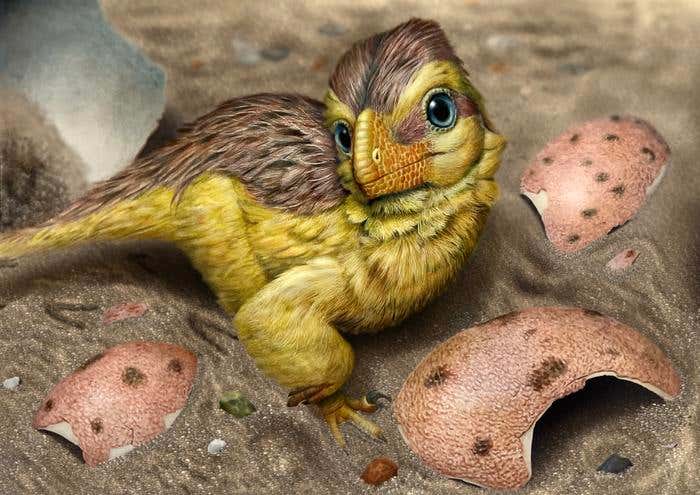Tiny alpaca nanobody blocks two deadly human viruses, study finds
Researchers discover alpaca nanobody that blocks Nipah and Hendra viruses, paving way for new treatments.

Scientists at The University of Queensland found a tiny alpaca-derived nanobody that neutralizes deadly Nipah and Hendra viruses. (CREDIT: CC BY-SA 4.0)
Two dangerous viruses without cures or vaccines have long worried health experts. Hendra and Nipah viruses can spread from animals to people. These henipaviruses can cause deadly infections, often leading to severe breathing problems and brain swelling. Hendra mainly spreads from horses in Australia, while Nipah outbreaks occur almost every year in Asia, especially Bangladesh. Both viruses come from bats called Pteropus fruit bats.
Published in the journal, Nature Structural & Molecular Biology, scientists at The University of Queensland have found a promising weapon. Professor Daniel Watterson and Dr. Ariel Isaacs led a team that discovered a small but powerful nanobody called DS90. This nanobody came from the immune system of an alpaca named Pedro. Alpacas belong to a group called camelids, the only land animals that make nanobodies.
Dr. Isaacs explained, “A nanobody is one-tenth the size of an antibody. Because it’s so small, it can reach parts of a virus that normal antibodies can’t.”
Unlike antibodies, nanobodies stay stable even at higher temperatures. They are also easier and cheaper to produce. This makes them a good option for treatment in regions without easy access to refrigeration.
The Science Behind DS90
Researchers used a platform created by Professor Alejandro Rojas-Fernandez at Universidad Austral de Chile to find DS90. His team isolated it from Pedro’s immune cells. They built a large library of possible nanobodies and used special screening methods to find the strongest ones. DS90 was among the best.
At The University of Queensland, scientists tested DS90 to see if it could block the viruses. They used cryogenic electron microscopy to look closely at how DS90 binds to the virus proteins. Professor Watterson said, “We could see exactly how the nanobody attached to the virus. It reached deep into pockets that normal antibodies can’t access.”
This binding is important. By locking onto these hidden pockets, DS90 stops the virus from entering human cells. Without entry, the virus cannot multiply or cause illness.
Related Stories
The research showed that DS90 has a very strong grip. Its dissociation constant against Nipah F protein was 4.83 nanomolar, meaning it binds tightly. Tests also showed DS90 could neutralize different strains of Nipah and Hendra viruses. Its half-maximal inhibitory concentration was in the picomolar range, which is extremely potent.
Combining Forces Against Viral Escape
Viruses like Nipah and Hendra mutate quickly. This means they can escape treatments by changing their surface proteins. Many antibody treatments have failed over time because of this. For example, COVID-19 variants have shown how antibodies can lose effectiveness as the virus mutates.
To tackle this, the team combined DS90 with an antibody called m102.4. This antibody targets a different part of the virus called the receptor-binding protein (RBP). m102.4 was created at The University of Queensland and has already been tested in animal models. It targets the spot where the virus attaches to human cells.
By linking DS90 with m102.4, the researchers created a bispecific antibody. This dual-targeting biologic can bind to two viral proteins at once. Dr. Isaacs explained, “We demonstrated that the combination of DS90 with m102.4 prevents Nipah virus from mutating and evolving.”
This approach stops the virus from finding a loophole. Even if it mutates one protein, the other binding site remains blocked. This reduces the chance of new deadly variants emerging.
Bispecific antibodies have other advantages too. They are cheaper to produce than antibody cocktails, which mix several separate antibodies. They are also easier to store and use because they come as a single molecule.
From Alpacas to People
The journey of DS90 started with Pedro the alpaca. Scientists immunized Pedro with parts of the virus to train his immune system. They then collected immune cells to build their library. Using bacterial display techniques, they sorted millions of nanobody possibilities. DS90 stood out because of its strength and stability.
Professor Rojas-Fernandez said, “Together with UQ, we aimed to build a broad barrier against future pandemic viruses based on scalable antiviral nanobodies – this fantastic work is just the beginning.”
Researchers used electron microscopy to see DS90’s detailed binding. DS90 binds to a glycan-free site on the virus’s fusion protein. Its unique shape allows it to slip into deep quaternary pockets, unlike regular antibodies that stick only to exposed surfaces. The nanobody’s CDR2 and CDR3 regions create strong hydrogen bonds, locking it in place.
Interestingly, DS90’s binding even alters the shape of parts of the virus protein, further stabilizing it and preventing fusion with human cells. It also mimics parts of the virus’s own fusion peptide, disrupting how viral particles come together to infect cells.
What Lies Ahead
The study showed DS90 neutralized multiple strains of Nipah and Hendra, including some with mutations that resist other treatments. This broad activity is crucial because henipaviruses mutate often, like many RNA viruses.
Dr. Isaacs noted, “Other nanobodies have been approved as cancer treatments. It is now exciting to see that nanobodies can also neutralise viruses.”
Professor Watterson added, “This new information is a crucial step towards using a nanobody to combat Hendra and Nipah, which cause outbreaks in people and can often lead to fatal respiratory and neurological disease.”
The next step is to translate these findings into a ready-to-use therapy. Researchers hope to develop it as an emergency treatment in case of outbreaks. This would be especially useful in Australia and Asia where Hendra and Nipah pose ongoing threats.
The research team included scientists from Universidad Austral de Chile, CSIRO’s Australian Centre for Disease Preparedness, and the University of Science and Technology of China. Their work shows how international collaboration can speed up the fight against deadly viruses.
A Broader Future For Nanobodies
This discovery opens the door to future nanobody-based treatments. Because nanobodies are small, stable, and easy to produce, they could play a big role in stopping pandemics before they start.
DS90’s success shows that targeting hidden viral sites works. The team’s bispecific antibody approach may set a new standard in antiviral therapies. By blocking two viral proteins at once, treatments can remain effective even as viruses mutate.
In the words of Professor Rojas-Fernandez, “This is just the beginning.”
Note: The article above provided above by The Brighter Side of News.
Like these kind of feel good stories? Get The Brighter Side of News' newsletter.



